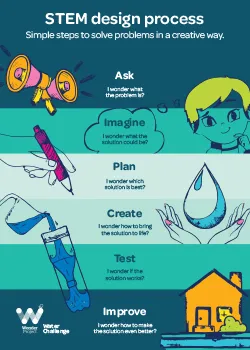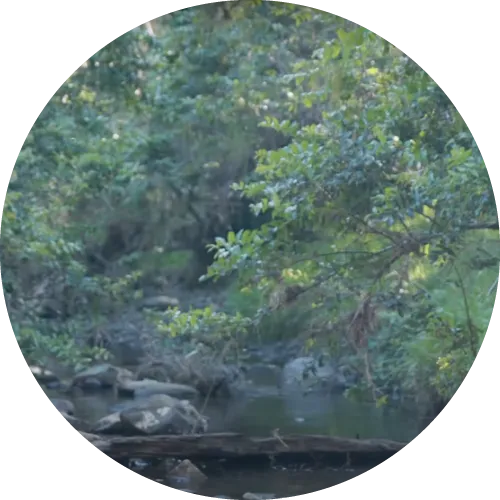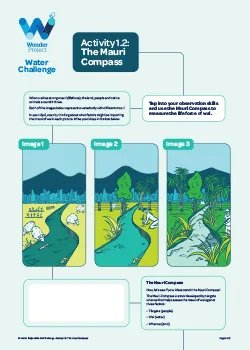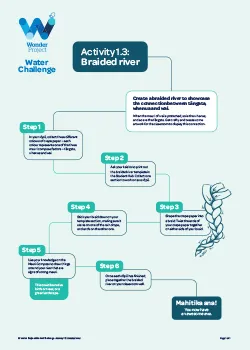

Module 1: Protect
Ko te wai te ora ngā mea katoa – Water is the life giver of all things.
Nau mai haere mai, welcome to the Water Challenge.
Get ready to unpack your kit, meet your Wonder Project Ambassador, and discover the world of wai (water).
Before you get started, make sure you’ve done your pre challenge survey.
The world of wai
From nourishing our whenua (land) and hapori (communities) to helping us clean, eat and travel, wai is the essence of all life. We need to ensure future generations can all benefit from clean, healthy wai. That means protecting the mauri (lifeforce) of wai as we support its journey from lakes and rivers, to our hapori, and back to the sky.
Let’s dive in!
Over the course of the challenge, you’ll learn what it takes to care for and connect wai to where it’s needed by creating your very own wai network. Using science, technology, engineering and maths (STEM) skills and mātauranga Māori (Māori knowledge), you’ll engineer a splash-tastic solution to our challenge pātai (question):
I wonder how to support the journey of wai?
Meet your support crew
It’s up to all of us to protect the mauri of wai. Your Wonder Project Ambassador and kaiako (teacher) are here to help you through each module of the Water Challenge.
Say kia ora to your ambassador and whakarongo (listen) to their incredible STEM story.
Unpack your wai kit
The Wonder Project has hooked you up with a wai kit to get you started on your journey.
You’ll also need to collect a few more things to help along the way:
- Food colouring, vinegar and salt
- Clear, recycled 1.5/2L bottles
- Natural debris (grass, small pieces of bark, leaves, small pebbles, etc)
- Containers that hold at least 500ml of wai
STEM design process
To find a solution to our challenge pātai, we’re going to follow the STEM design process. It’s a series of simple steps that STEM superstars use to solve problems and make ideas work.

Poster: STEM design process
Print and display this poster on the STEM design process – six steps STEM superstars use to solve a problem.

Ask
STEM superstars start their projects by asking lots of pātai. This helps them understand the problem they’re trying to solve.
Activity 1.1: Ask
Get into challenge rōpū (teams) and think about what you’d like to achieve by the end of your Water Challenge journey.

Wai is a taonga | He Taonga te Wai
Ko au te wai, ko te wai ko au – the water is me, and I am the water
In te ao Māori (the Māori world), wai is a precious taonga (treasure) with its own mauri, or life force. It flows through our lands and bodies, nourishing ecosystems, sustaining life, and connecting us all.
Wai is not simply a resource to be used, but something to care for and respect. When the mauri of wai is protected, the whenua and its inhabitants thrive.

Kaitiakitanga | guardianship
Humans are connected to the natural environment. So, we have a responsibility to look after wai by practising kaitiakitanga (guardianship), to ensure it stays healthy – now and into the future.
Why do you think it’s important to practise kaitiakitanga for wai?
The Mauri Compass
A great way to figure out whether wai is healthy is the Mauri Compass. But what is it?
The Mauri Compass is a tool developed by tangata whenua to assess the mauri (life force) of wai. It looks at factors relating to:

Natural sources of wai
STEM superstars use tools like the Mauri Compass to assess whether natural sources of wai are healthy enough for things like drinking, cleaning and collecting kai.
Can you name some natural sources of wai? How could our senses give us signs and clues about the mauri of these wai sources?
Activity 1.2: The Mauri Compass
Using the Mauri Compass, assess the mauri of different natural sources of wai. Then, identify the main wai sources in your hapori using NIWA’s mapping tool.

Braided river
Ka pai e hoa mā! After all that incredible mahi, it’s time to harness your auahatanga (creativity) and build a work of art to represent your learning so far.
Activity 1.3: Braided river
Create a class artwork linking tāngata, whenua, and wai together as a braided river.

Reminder!
Start collecting 1.5/2L bottles to collect wai.
Tools down!
Mīharo. Today you:
- Met your ambassador
- Unpacked your wai kit
- Discovered the STEM design process
- Discussed He Taonga te Wai
- Learned about the Mauri Compass
- Explored natural water sources in your hapori